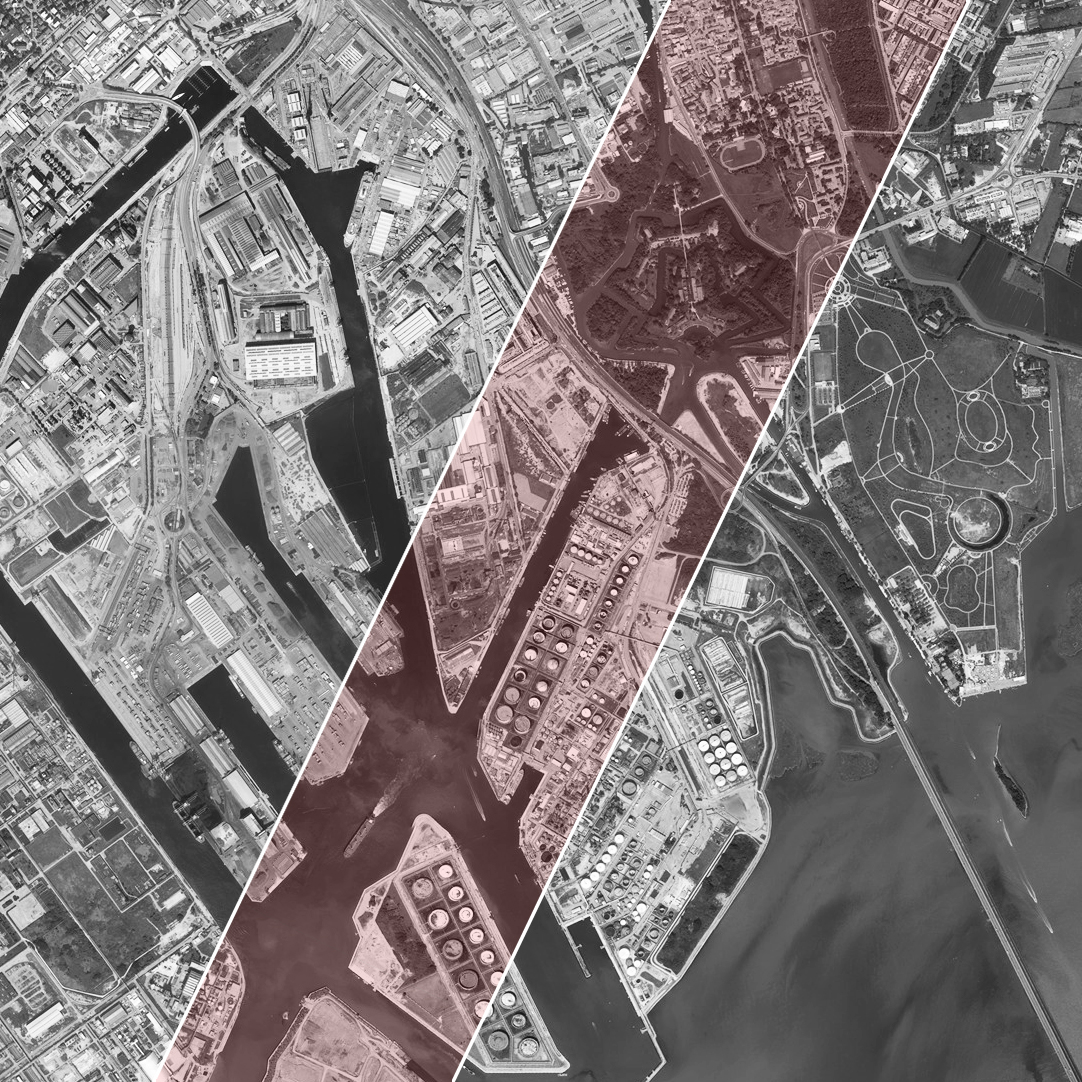Professor
Patrizia Montini Zimolo [IUAV]
Assistants
Flavia Vaccher, Cosimo Marchiori, Alex Ricaldin

STRIP MARGHERA
Strip isn’t necessary a wall but however it is a border where you meet an other condition and where tourists stop and go. This constantly growing mass of people is looking for the history of Venice, its city center, of a city that becomes smaller and smaller to absorb it all. Venice isn’t longer the cornerstone of the Lagoon, but the illusion of its centrality legitimizes this new extension of the city.
The tourist connotation of the Strip is built on moving people, the development of the main infrastructure to the lagoon city: the new railway and marine terminal. The Strip is characterized by cultural and entertainment spaces, like an imaginary museum where the visitors can experience Venice with virtual images and models. The tourist can already be felt in the city and buying souvenirs; in this way the selling of the city can be stopped.
The Strip exalts the potentiality of the site including the monumental shape of the Fort, the new Science and Technological Center of Vega and the industrial archeology of the Petrochemical. It extends along the Bottenigo Canal and it expects the extension of the Park of San Giuliano to the 1st and the 2nd industrial area, where you can experience the history of the ecosystem of the Lagoon in a big water park.
The Strip is a border area between land and water, but also between contemporary city and historical city, and it marks the access to Venice. The Strip tries to balance the two cities instead of admitting their final incompatibility.
Strip non è necessariamente un muro ma è comunque un confine sul quale si incontra una condizione altra e dove si fermano e arrivano i turisti, massa in costante crescita alla ricerca perpetua della storia, del suo centro, di una venezia che diventa sempre più piccola per assorbirli tutti e che non è più nemmeno il vero centro: è un miraggio la cui illusoria presenza può dare legittimità a questa nuova parte parte della laguna.
La connotazione turistica della strip, si costruisce su gente in movimento, sempre pronta a spostarsi, è caratterizzata in primis dalla confluenza e dal potenziamento di alcune delle principali infrastrutture esistenti di accesso alla città insulare, il nuovo terminal ferroviario e marittimo e la darsena. La strip è marcata poi da spazi per la cultura e il divertimento che comprendono: un grande museo immaginario dove attraverso immagini virtuali, plastici, si vive lo spettacolo di Venezia. I turisti possano sentirsi già arrivati nella città mitica e abbandonarsi allo shopping in nuovi mercati urbani dove la città si possiede con il semplice acquisto di un souvenir frenando la sua svendita reale pezzo per pezzo al migliore offerente.
La strip esalta le potenzialità del sito inglobando l’edificio monumentale del forte, si ancora sul “fondo” dato dal insediamento del nuovo polo scientifico e tecnologico, dalle ciminiere dell’ex area industriale del petrolchimico, si allunga lungo il canale e si estende col parco di san giuliano nelle aree interrate della I e II zona industriale, dove un grande parco acquatico permette di sperimentare la storia del ecosistema lagunare delle barene e il suo insopprimibile legame con la laguna.
La strip è area di confine tra terra e acqua, ma anche tra città contemporanea e città storica e segna l’ingresso alla città insulare sempre più oppressa dal ruolo di centro turistico mondiale tentando di riequilibrare le due visuali e età di città anziché ammetterne la definitiva separazione e incompatibilità.
